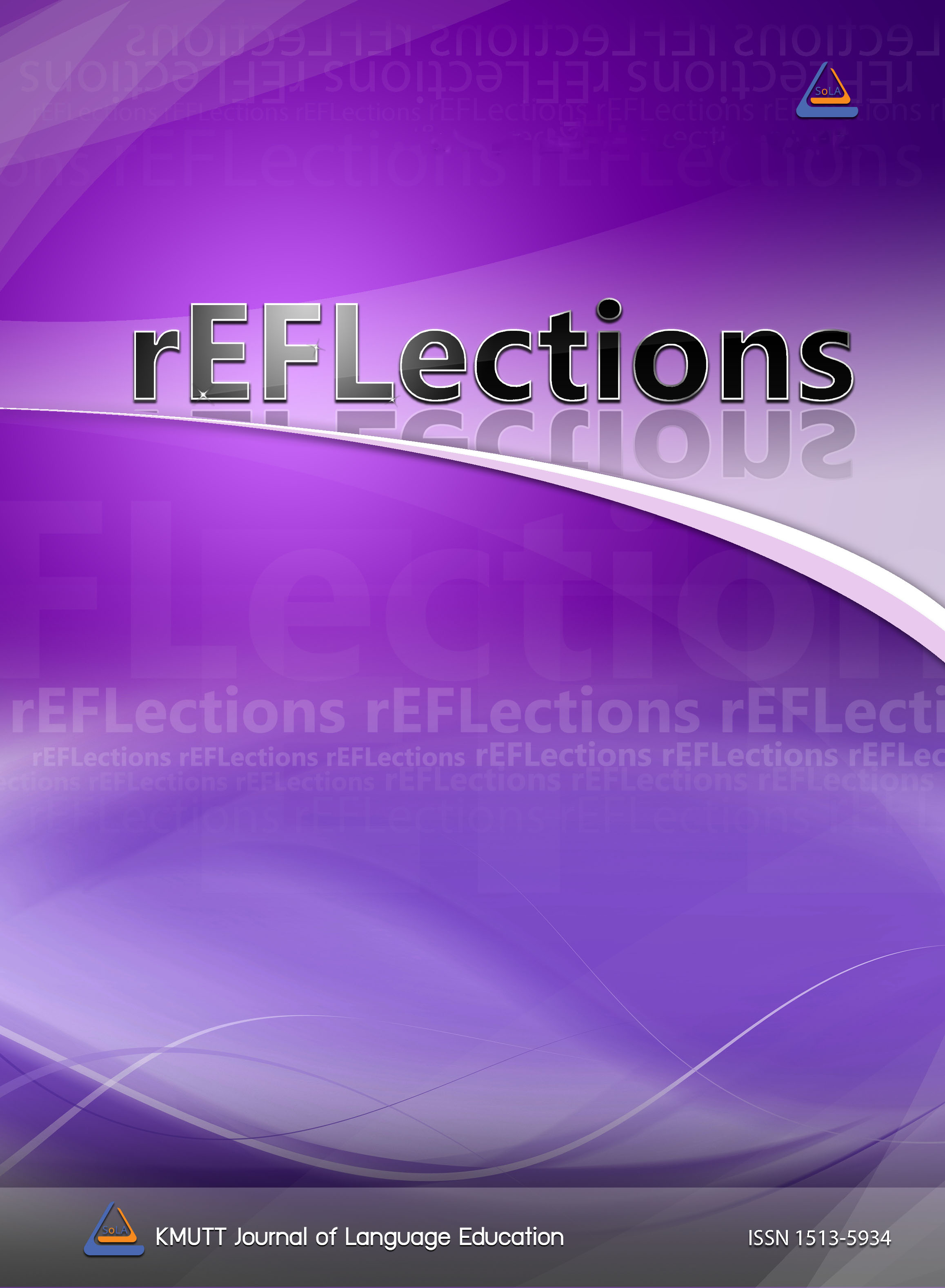A Corpus-Based Study of English Synonyms: Chance and Opportunity
Main Article Content
Abstract
The study aims to investigate differences and similarities of two synonymous nouns, chance and opportunity. The sources of data were from the Corpus of Contemporary American English (COCA) and online dictionaries. The study applied both quantitative and qualitative methodology. Throughout the five text types of COCA (i.e. spoken, fiction, popular magazines, newspapers, and academic journals), opportunity was used most frequently in academic texts and was found least often in fiction. On the other hand, chance occurred least in the genre of academic texts and most often in the spoken genre. The claim that opportunity tends to be used more often in formal style than its near synonym was supported by a number of academic words in the list of its collocates. Although a wider range of meanings of chance reflects its polysemous status, chance and its collocates have fewer semantic preferences than those of opportunity. The findings also suggest that near-synonyms may behave differently in terms of collocation and semantic prosody although they share similar meanings.
Article Details
References
Chung, S. F. (2011). A corpus-based analysis of “create” and “produce”. Chang Gung Journal of Humanities and Social Sciences, 4(2), 399-425.
Conzett, J. (1997). ‘Integrating collocation into a reading and writing course’. In J. Coady & T. Huckin (Eds.), Second Language Vocabulary Acquisition. Cambridge, United Kingdom: Cambridge University Press.
Davies, M. (2009). The 385+ million w ord Corpus of Contemporary American English (1990–2008+): Design, architecture, and linguistic insights. International journal of corpus linguistics, 14(2), 159-190.
Gu, B. J. (2017). Corpus-based study of two synonyms: obtain and gain. Sino-US English Teaching, 8, 511-522.
Hoey, M. (1991). Patterns of lexis in text (Vol. 299). Oxford, United Kingdom: Oxford University Press.
Hoffmann, K. (2014). A corpus-based analysis of the near synonyms ‘Nice’, ‘Kind’, ‘Lovely’, ‘Friendly’, ‘Gorgeous’ and ‘Pleasant. 122228 BA Paper–Usage-based approach to linguistic investigations. Wein, Universitӓt.
Hu, H. C. (2015). A semantic prosody analysis of three adjective synonymous pairs in COCA. Journal of Language and Linguistic Studies, 11(2), 117-131.
Jirananthiporn, S. (2018). Is this problem giving you trouble? A corpus-based examination of the differences between the nouns ‘problem’ and ‘trouble’. Thoughts, 2, 1-25.
Kearns, K. (2006). Lexical Semantics. In B. Aarts & A. McMahon (Eds.), The Handbook of English Linguistics (pp. 692-723). Oxford, United Kingdom: Blackwell Publishing.
Louw, B. (1993). Irony in the text or insincerity in the writer? The diagnostic potential of semantic prosodies. Text and technology: In honour of John Sinclair, 157-176.
McEnery, T., & Hardie, A. (2012). Corpus Linguistics: Method, Theory and Practice. Cambridge, United Kingdom: Cambridge University Press.
Murphy, M. L. (2010). Lexical meaning. Cambridge, United Kingdom: Cambridge University Press.
Partington, A. (1998). Patterns and meanings: Using corpora for English language research and teaching (Vol. 2). Amsterdam, The Netherland: John Benjamins Publishing.
Partington, A. (2004). “Utterly content in each other’s company”: Semantic prosody and semantic preference. International journal of corpus linguistics, 9(1), 131-156.
Petcharat, N., & Phoocharoensil, S. (2017). A Corpus-Based Study of English Synonyms: Appropriate, Proper, and Suitable. LEARN Journal: Language Education and Acquisition Research Network, 10(2), 10-24.
Sandström, K. (2005). Is an Opportunity a Possibility and a Chance?: a semantic study of three similar nouns. Luleå University of Technology, Sweden.
Sinclair, J. M., & Carter, R. (2004). Trust the Text: Language, Corpus and Discourse. Abingdon-on-Thames, England: Routledge.
Stubbs, M. (2001). On inference theories and code theories: Corpus evidence for semantic schemas. Text & Talk, 21(3), 437-465.
Tognini-Bonelli, E. (2001). Corpus linguistics at work (Vol. 6). Amsterdam, The Netherland: John Benjamins Publishing.
Xiao, R., & McEnery, T. (2006). Collocation, semantic prosody, and near synonymy: A cross-linguistic perspective. Applied linguistics, 27(1), 103-129.


